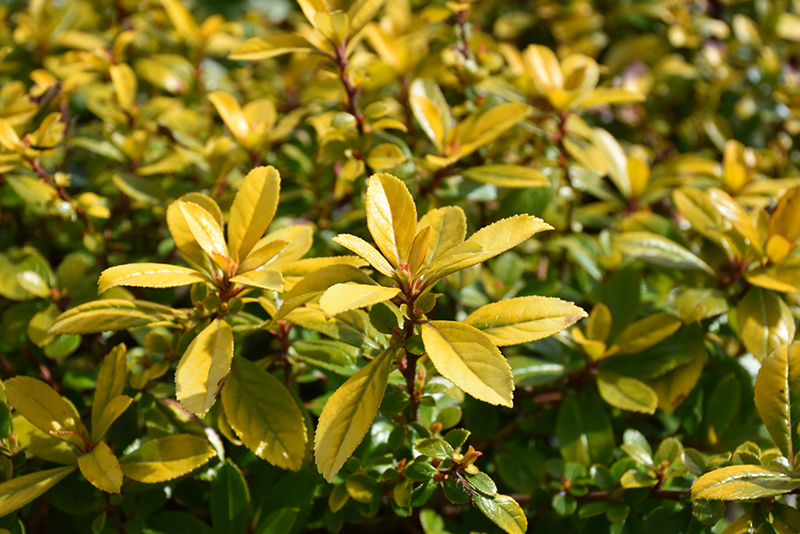Gold Brian Escallonia
Description
Clusters of rich rose-red pink flowers bloom in summer over stunning yellow foliage, on this upright, compact, evergreen shrub; a perfect choice for screening or a hedge in that it responds well to shaping; also great as a color accent along borders
Landscape Attributes
Gold Brian Escallonia is a multi-stemmed evergreen perennial with a mounded form. Its relatively fine texture sets it apart from other garden plants with less refined foliage.
Gold Brian Escallonia is recommended for the following landscape applications;
Planting & Growing
Gold Brian Escallonia will grow to be about 6 feet tall at maturity, with a spread of 6 feet. Its foliage tends to remain dense right to the ground, not requiring facer plants in front. Although it is technically a woody plant, this slow-growing plant can be expected to behave as a perennial in our climate if planted outdoors over the winter, usually regrowing from its base (crown) the following year. As such, gardeners should take into consideration that it will perform differently than it would in its native habitat.
This plant does best in full sun to partial shade. It is very adaptable to both dry and moist growing conditions, but will not tolerate any standing water. It is considered to be drought-tolerant, and thus makes an ideal choice for a low-water garden or xeriscape application. It is not particular as to soil type or pH, and is able to handle environmental salt. It is somewhat tolerant of urban pollution. This particular variety is an interspecific hybrid.
Gold Brian Escallonia is a fine choice for the garden, but it is also a good selection for planting in outdoor pots and containers. Because of its height, it is often used as a 'thriller' in the 'spiller-thriller-filler' container combination; plant it near the center of the pot, surrounded by smaller plants and those that spill over the edges. It is even sizeable enough that it can be grown alone in a suitable container. Note that when growing plants in outdoor containers and baskets, they may require more frequent waterings than they would in the yard or garden. Be aware that in our climate, this plant may be too tender to survive the winter if left outdoors in a container. Contact our experts for more information on how to protect it over the winter months.

